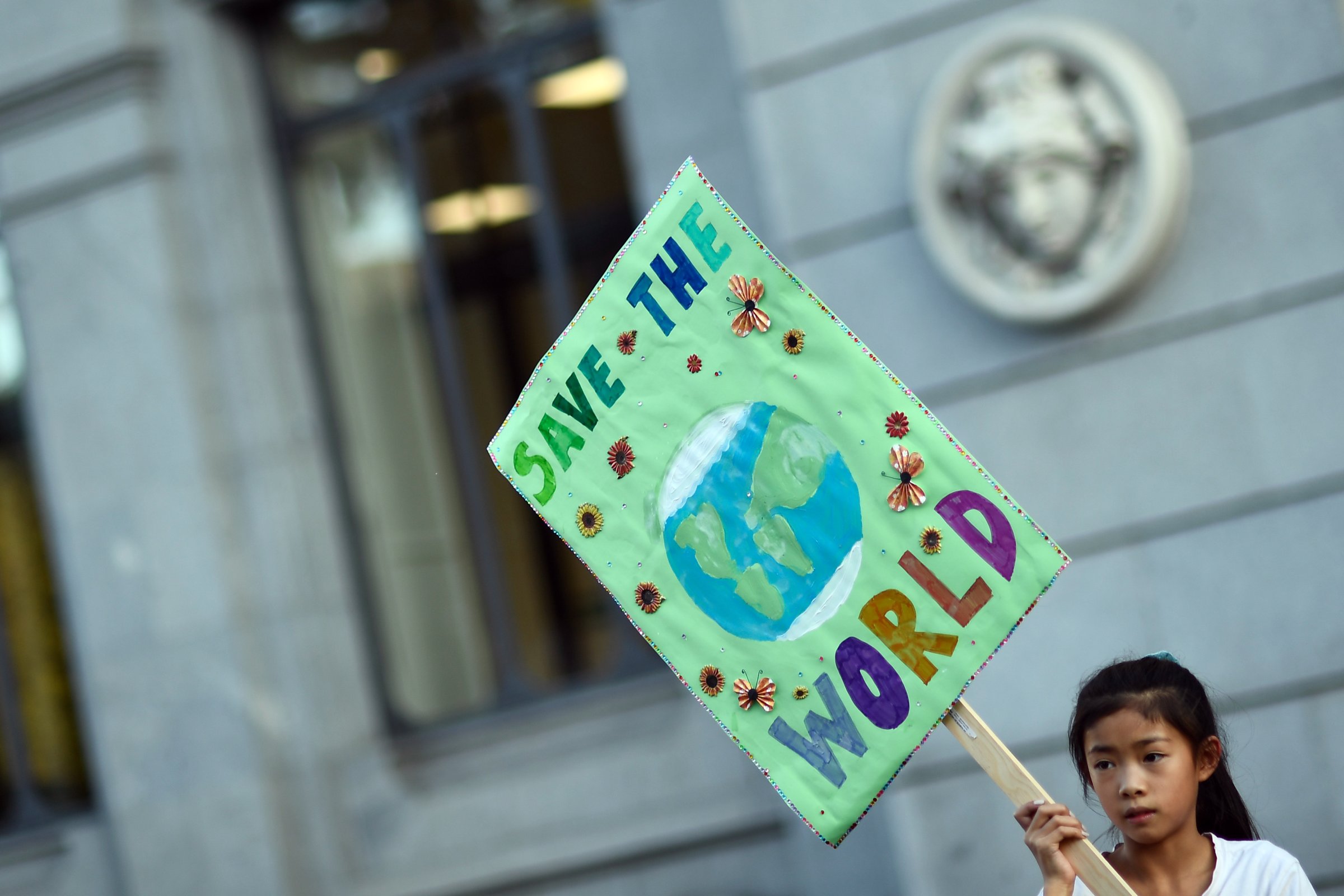
Let’s pretend the 195 nations that signed the 2016 Paris Climate Accord really do take all of the steps necessary to reach the agreement’s key goal: limiting the increase in global temperature to 1.5°C above pre-industrial levels.
In that world, any children born today would grow up to witness some happy milestones. If they lived in the United Kingdom, they’d see their country phase out the use of coal by the time they turned six. If they lived in France, they would see gasoline-powered cars eliminated by their 21st birthday. And, as all of the 195 countries similarly reached their individual targets, all of the children born today would be 31 when the world reached net-zero greenhouse emissions.
But in the real world, the U.S. has already pulled out of the Paris agreement, other nations are observing it only spottily, global temperatures are continuing to rise—and the health of children is being clobbered in the process. In a sweeping study just published in The Lancet, investigators from 35 institutions—including the World Health Organization, Imperial College London, The University of York, Yale University and Iran University of Medical Sciences—analyzed the planet’s climatological health on 41 indices, such as the rising incidence of floods, wildfires and mosquito-borne diseases; adaptation and mitigation steps being taken to address the problems; and economic resources being devoted to that work. They found that while progress is being made, too many trend lines continue to point downward. We will all pay a price for that, but today’s children will pay the highest.
“With every degree of warming, we are committing a child born today to a future where their health and well-being will be increasingly threatened,” says Dr. Renee Salas of the Harvard University Global Health Institute, lead author of the Lancet policy brief that accompanied the study. “Climate change, and the air pollution from fossil fuels that are driving it, threaten a child’s health starting in their mother’s womb and only accumulate from there.”
One of the most damaging examples of that cumulative phenomenon is the microscopic particulate matter produced by burning fossil fuels. The study found that more than 90% of the world’s 2.2 billion children are exposed to particles at concentrations above the safe limit defined by the World Health Organization. Drawing their first breath in a world like that leaves them at a higher lifetime risk of developing asthma, pneumonia and chronic obstructive pulmonary disease. And while the air is, on average, cleaner in wealthy countries like the U.S. than it was 50 years ago, the world as a whole is becoming more urbanized, with 70% of the global population expected to be living in cities by 2050—precisely where the air is dirtiest.
Who should be TIME’s Person of the Year for 2019? Cast your vote in the reader poll.
Rising temperatures, the leading indicator of climate change, do their own brand of pediatric damage. Children’s bodies are less adept than adults at regulating temperature, and babies rely on caretakers to remove them from the heat and give them water when temperatures rise. This, the study explains, leaves them at significantly greater danger of heat-related electrolyte imbalance, high fever, and kidney and respiratory disease.
In this case, geography is a force multiplier. While the average global temperature has risen 0.2°C compared to a 1983-2005 baseline, the average heat in big cities and other population centers, where most people live—what researchers call the population-weighted temperature—has risen 0.8°C. And in the hottest places, the one great hedge against heat—air conditioning—is often not available.
In the U.S. and Japan, for example, 90% of homes are air conditioned. In India, it’s 4%. Worse, while 19% and 13% of the population of the U.S. and Japan respectively are in the 0-to-14 age group, fully 35% of India’s 1.3 billion population is 14 or younger. That means nearly 450 million overheated children in a country where record-high temperatures caused tens of thousands of people to flee their homes last summer and led to nearly 200 deaths in the first half of June alone—exactly the kind of first-line heat problems the Paris Accords were designed to address.
Childhood nutrition suffers too. Rising temperatures are reducing the duration of the growing season for three key staples—maize, rice and spring wheat—slashing harvests and increasing the risk of famine in vulnerable developing countries. At the same time, rising sea temperatures are leading to a decline in fish stocks, a source of 20% of the protein in the diet of 3.2 billion people. “Globally, children are overwhelmingly the victims of undernutrition,” says Salas, “and suffer a range of health harms, such as smaller growth in the womb, stunted development, and lack of critical micronutrients.”
Finally, there are the diseases that thrive in a warming world. The most troubling explored in the Lancet study are malaria and dengue fever—which, again, take particular aim at children. The investigators found that both diseases are on the rise, more or less in lockstep with climate. The incidence of dengue fever in particular is already as much as 9.8% above pre-2012 baselines.
Climate change is a perversely egalitarian scourge, sparing no one, affecting everyone. But the special toll it takes on children makes it perversely cruel too. In a world that ostensibly prizes justice, it is unjust in the extreme for the people who are the least responsible for causing a problem to suffer from it the most. The Paris Accord—honored instead of ignored—offers a way out.
More Must-Reads From TIME
- The 100 Most Influential People of 2024
- How Far Trump Would Go
- Why Maternity Care Is Underpaid
- Scenes From Pro-Palestinian Encampments Across U.S. Universities
- Saving Seconds Is Better Than Hours
- Why Your Breakfast Should Start with a Vegetable
- Welcome to the Golden Age of Ryan Gosling
- Want Weekly Recs on What to Watch, Read, and More? Sign Up for Worth Your Time
Write to Jeffrey Kluger at jeffrey.kluger@time.com